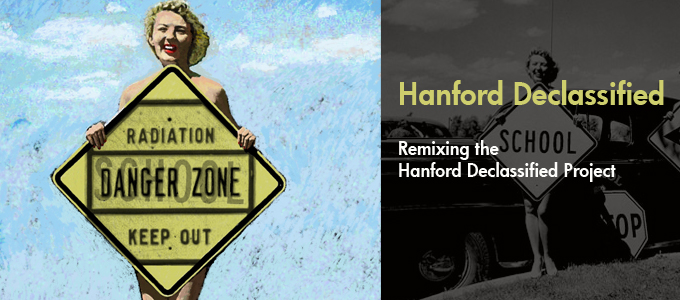The LA Times reports today on the situation at Hanford:
There is also an urgency to the mission, given the risk that radioactive waste will someday reach the Columbia River, the largest river in the West. About 1 million gallons of the waste has already leaked into the ground at Hanford, though government experts are confident the rate of leakage has slowed or stopped.
Government hydrologists say they have no evidence that any leaked sludge has reached the water table 250 feet below ground, and they cannot calculate when — or whether — the radioactivity will reach the Columbia River.
Such assurances are rejected by some outside experts, including geotechnical engineer John Brodeur, who conducted a comprehensive study of the tanks in the late 1990s for the Energy Department.
“Some of the ground under the tanks is screaming hot,” said Brodeur. “The groundwater is already contaminated.”
Back in April the governor of Washington State, Christine Gregoiire, told CBS news:
Anderson says that the leaking tanks have been stabilized and that there’s virtually no chance of further seepage. But Christine Gregoire, the governor of Washington State, who has worked on this issue from the beginning, doesn’t believe that for one minute.
“Let me tell you the story. 1989: They told me there was zero chance that there would be any leakage and ground water contamination. Sixteen years later, we have confirmed 67 leakers, groundwater contamination. I told them then, ‘Gravity works like this.’ And I’ll tell them again today: gravity means we are very vulnerable to the groundwater contamination and a plume that we now have moving towards the Columbia River, which is the lifeline of our Pacific Northwest,” Gov. Gregoire says.
Asked what she meant by a “plume,” the governor said, “We’ve got an area that is contaminated in the groundwater and is migrating towards the Columbia River. And if it gets there, Lesley, we have an absolute disaster on our hands.”
She’s worried about a move in Congress to cut the budget for the Hanford clean-up.
Source: Read more
What’s also disquieting is that they’re twenty years behind on a plant that they’re not confident won’t become a white elephant in the desert, as they’re not sure the thing will even work.
The separation occurs in a huge pretreatment plant, which by itself will cover the size of four football fields and reach 12 stories high. For safety, the concrete walls are 4 feet thick. The separate processes use both fine metal filters and two chemical processes, which have never been tested together on a large scale.
“They are taking a real risk the thing won’t work and they will have a $11.5-billion white elephant sitting in the desert,” said Tom Carpenter, nuclear oversight program director at the Government Accountability Project, a Washington, D.C., watchdog group.
Amid growing congressional concerns about Hanford’s technology, Bechtel assembled a team of the top nuclear experts in the nation.
In a March report, they cited a number of defects that would have to be fixed for the plant to work. They said one of the two chemical processes was “undemonstrated” and the other “will not provide acceptable performance.” The whole pretreatment facility “will be difficult to reliably operate.”
The team of outside experts also raised concerns with the vitrification processes. Once the waste streams are separated, they are sent to two different final treatment plants for vitrification. The melters in the low-level plant could wear out or fail prematurely, while the piping in the high-level plant could get plugged up, they said.
The report raised the prospect that the Hanford treatment plant might wear out before all the waste was treated, particularly if it could not operate reliably and avoid shutdowns.
The plant is designed to turn out 6 metric tons of vitrified high-level waste per day and 30 tons of low-level waste. If it can do that, it will complete the job 40 years after starting up, or 2059. If the job lasts longer than that, the plant could wear out first.
Rispoli, the Energy Department environmental chief, believes the outside assessment shows that the plant will work. All the Energy Department has to do is solve the problems identified in the report, he said.
Source: Read more
Read the introduction to the Remixing the Hanford Declassified Project paintings

Leave a Reply